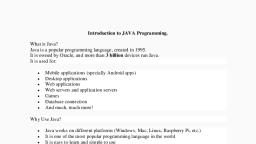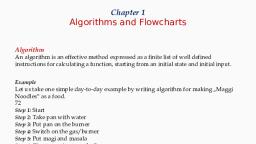Page 1 :
print(y), , Variables do not need to be declared with any particular type, and can even change type after they, have been set., , Example, , x4 # x is of type int, x = "Sally" # x is now of type str, print(x), , , , , Casting, 6/43, If you want to specify the data type of a variable, this can be done with casting., Example, x = str(3) # x will be '3', , y = int(3) # y will be 3, z = float(3) # z will be 3.0, , Get the Type, , You can get the data type of a variable with the type() function., , Example, , x5, , y = "John", print(type(x)), print(type(y)), , You will learn more about data types and casting later in this tutorial., Single or Double Quotes?, , String variables can be declared either by using single or double quotes:, , Example, x = "John", , # is the same as, x = ‘John’, , Case-Sensitive, Variable names are case-sensitive., , Example, , This will create two variables:, , azs4, A Sally", #A will not overwrite a, , , , 3.2 Variable Names, , A variable can have a short name (like x and y) or a more descriptive name (age, carname,, total_volume). Rules for Python variables:, , « Avariable name must start with a letter or the underscore character, , « Avariable name cannot start with a number, , + A variable name can only contain alpha-numeric characters and underscores (A-z, 0-9, and _, , ), « Variable names are case-sensitive (age, Age and AGE are three different variables), , Example, , Legal variable names:, , myvar = "John", my_var = "John", _my_var = "John", , , , myVar, MYVAR = "John", myvar2 = "John", , Example


















































